Topics
Historiography : Development in the West
History : Applied History
Working of the Constitution
Historiography : Indian Tradition
The Electoral Process
Political Science : Working of the Indian Constitution
Applied History
Political Parties
History of Indian Arts
- What is ‘Art’?
- Indian Traditions of Visual Arts (Drik Kala): Painting
- Prehistoric Paintings
- Mural Paintings and Cave Painting
- Folk Styles of Paintings
- Classical Styles of Painting
- Miniature Paintings in Manuscripts
- Modern Indian Paintings
- Indian Traditions of Visual Arts (Drik Kala): Sculpture Art
- Indus Civilization Sculpture
- Folk Styles of Sculptural Art
- Classical Styles of Sculptural Art
- Indian Iconography
- Indian Traditions of Visual Arts (Drik Kala): Architecture and Sculpture
- Rock-cut Architecture
- Temple Architecture
- Indo-Islamic Architecture
- Indo-Gothic architecture
- Indian Traditions of Performing Arts
- Indian Theatre
- Indian Music
- Indian Dance
- Present Scenario of the Performing Arts
- Art, Applied Art, and Professional Opportunities
Social and Political Movements
- Movement
- Important Movements in India
- Tribal Movement
- Farmers Movement
- Worker's Movements
- Women’s Movement
- Environment Movements
- Consumer Movement
Mass Media and History
Challenges Faced by Indian Democracy
Entertainment and History
Sports and History
Tourism and History
Heritage Management
History - Imperialism
History - 20th Century Age of conflict
History - Emancipation of Asia and Africa
History - World after World War 2
Political Science
Geographical discoveries and colonization
- Concept for Geographical Discoveries and Colonization
Africa
- Imperialism - Africa
Asia: India, China, Japan
- Concept for Asia: India, China, Japan
Dictatorships in Europe, Second World War and world
- Concept on Dictatorships in Europe
- Concept for Second World War and World
First world war
- Concept on First World War
The League of Nations
- Concept for the League of Nations
Russian Revolution
- Concept for Russian Revolution
United Nations Organization
- Concept for United Nations Organization
Africa
- Emancipation of Africa
Asia
- Emancipation of Asia
Globalization
- Globalization After World War II
Scientific and Technological Progress
- Scientific and Technological Progress After World War II
Cold war
- Formation of the Cold War
Social Diversity and Democracy
- Social Diversity
- Coccept for Caste/Race and Democracy
- Concept for Language and Democracy
- Cocnept for Religion and Democracy
- Concept for Gender and Democracy
- Concept for Democracy and Diversity
Challenges to Democracy Remedial Measures to the Challenges
- Concept for Challenges to Democracy Remedial Measures to the Challenges
Internal work
Democracy
- Democracy - Meaning, Types and Characteristics
Political Parties and Types
- Political Parties
- Importance of Political Parties
- Major National and Regional Parties in India/ Types of Political Parties
Notes
Folk Styles of Sculptural Art
1. Ganesha idols:
- Chatrapati Shivaji Maharaja started the celebrations as a way to promote culture and nationalism.
- The public celebration was initiated by Lokmanya Tilak in Pune in the year 1893.
- These idols come in a variety of sizes and shapes to accommodate the worshippers' needs.
- They are constructed of Shadu clay, brass, silver, gold, and Plaster of Paris (PoP).
- The Pen is a small town in Maharashtra's Raigad district that is famous for making Ganesha idols and has a history dating back over 100 years.
- Plaster of Paris was gradually introduced, and the real boom occurred in the 1970s, with the opening of Thane Creek and improved transportation.
- Nowadays people become more environmentally conscious so they choose organic soil/mud and natural colors.
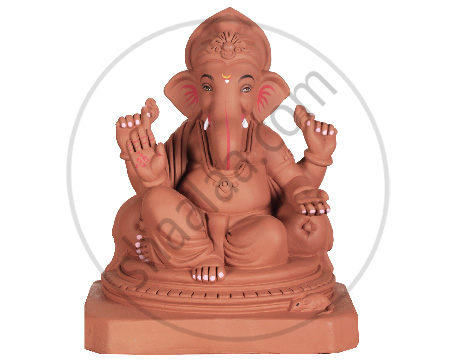
Ganesha Idol
2. Masks of Gauri:
- Parvati is the mother of Lord Ganesha and she is worshipped during the Ganesh Chaturthi or the festival of Ganesha in several parts of India. She is associated with fertility and prosperity, and women offer her worship for the longevity of their husbands.
- Gauri Mask is constructed of Shadu clay, brass, silver, gold, and Plaster of Paris (PoP).
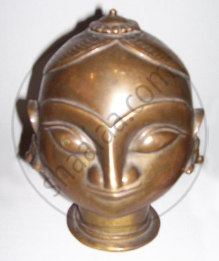
The face of Gauri is depicted on this brass mask. The ear decorations and headwear are in the Marathi tradition. Her beautiful lips and almond-shaped eyes display strong feminine traits.
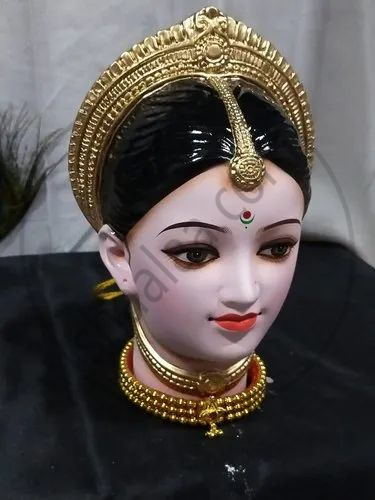
Plaster of Paris Gauri Mask
3. Bail Pola:
- The Bail Pola falls on the Pithori Amavasya of Sawan Maas.
- On the occasion of Bail Pola, farmers not only decorate their bullocks in amusing ways but also worship them as gods by performing aartis and touching their feet. This is done in the hopes that the bulls will be in good health again this year and that good seeds will be sown with their assistance, which will aid in the distribution of food grains to all.
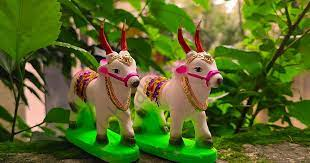
Bull Figurines
4. Veergals:
- Veergal or Veergala is a memorial stone of a brave warrior who died in battle.
- Word is derived from “Veerkallu’ a word in the Kannada language. Kallu means stone so Veerkallu means Warrior’s stone or Hero stone.
- It is known as Palia in North Maharashtra and Rajasthan.
- The stones depicted not only warriors who died in battle, but also women who bravely gave up their lives by immolating themselves in the fire, fearing capture and brutalization by the enemy. These are known as Sati Stones, and they can be found all over India.
- These were erected between the 5th and 13th centuries AD under the Yadava and Shilahara dynasties and they splattered all across India.
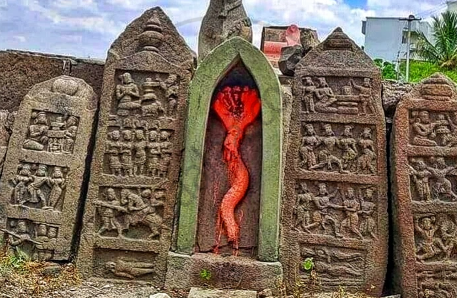
Veergal - Mahadev Temple, Margaon, Satara
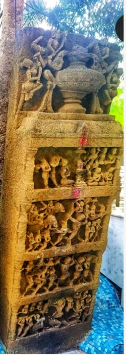
Borivali, Mumbai
If you would like to contribute notes or other learning material, please submit them using the button below.
